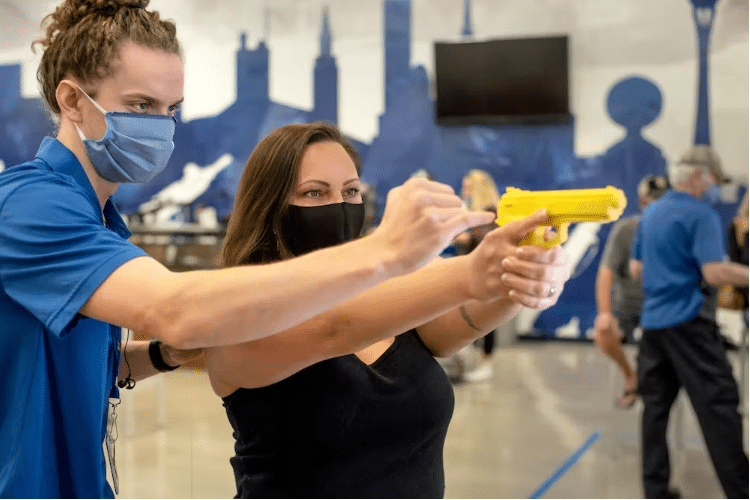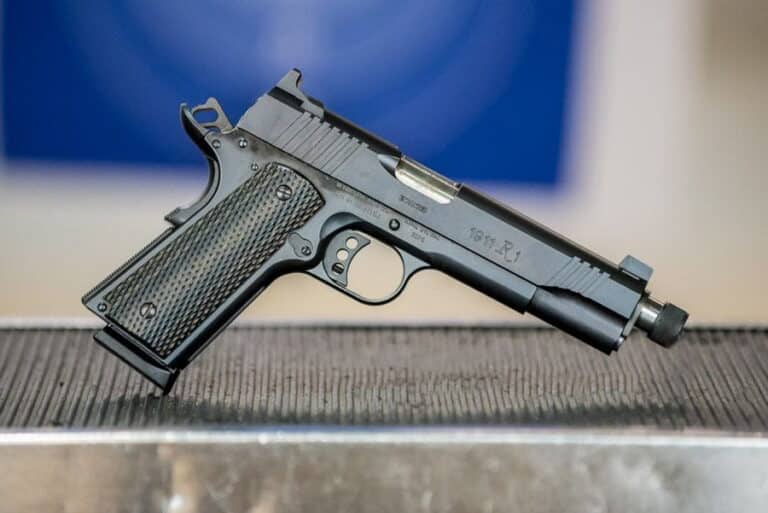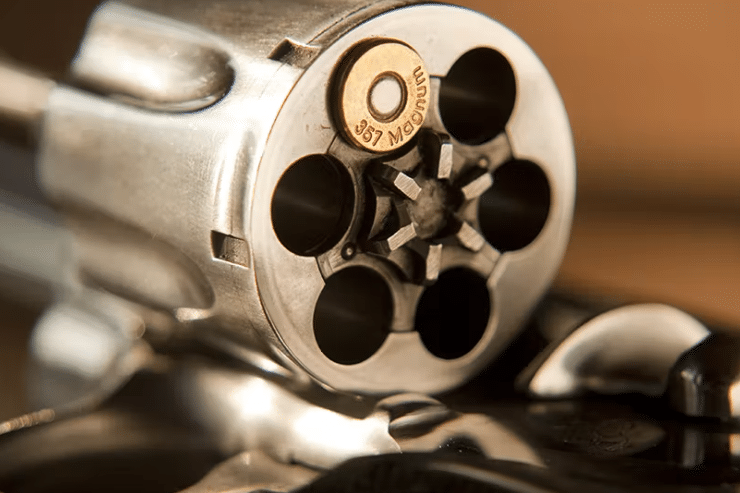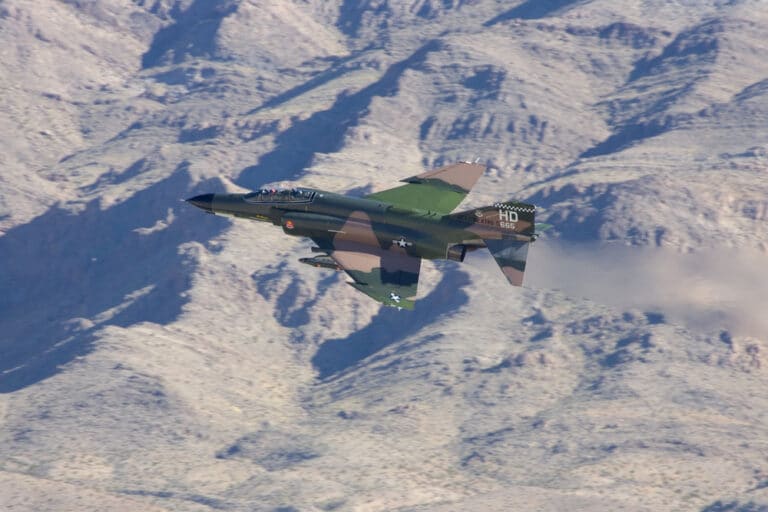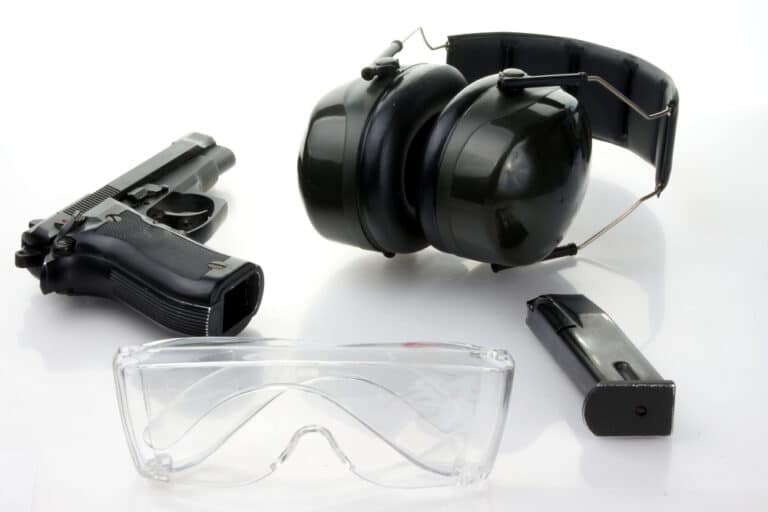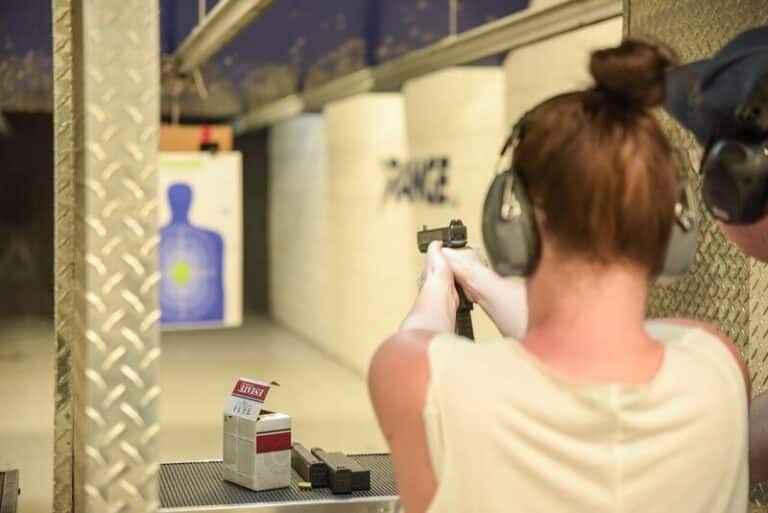Seven Fundamentals of Marksmanship
Becoming a great marksman isn’t complicated. That doesn’t mean it’s easy, however. If you want to become a better shooter, you must master the fundamentals of marksmanship. Learning how to properly handle a firearm will help you become a safer, more precise gun handler.
Here’s a look at the seven marksmanship fundamentals we teach at The Range 702.
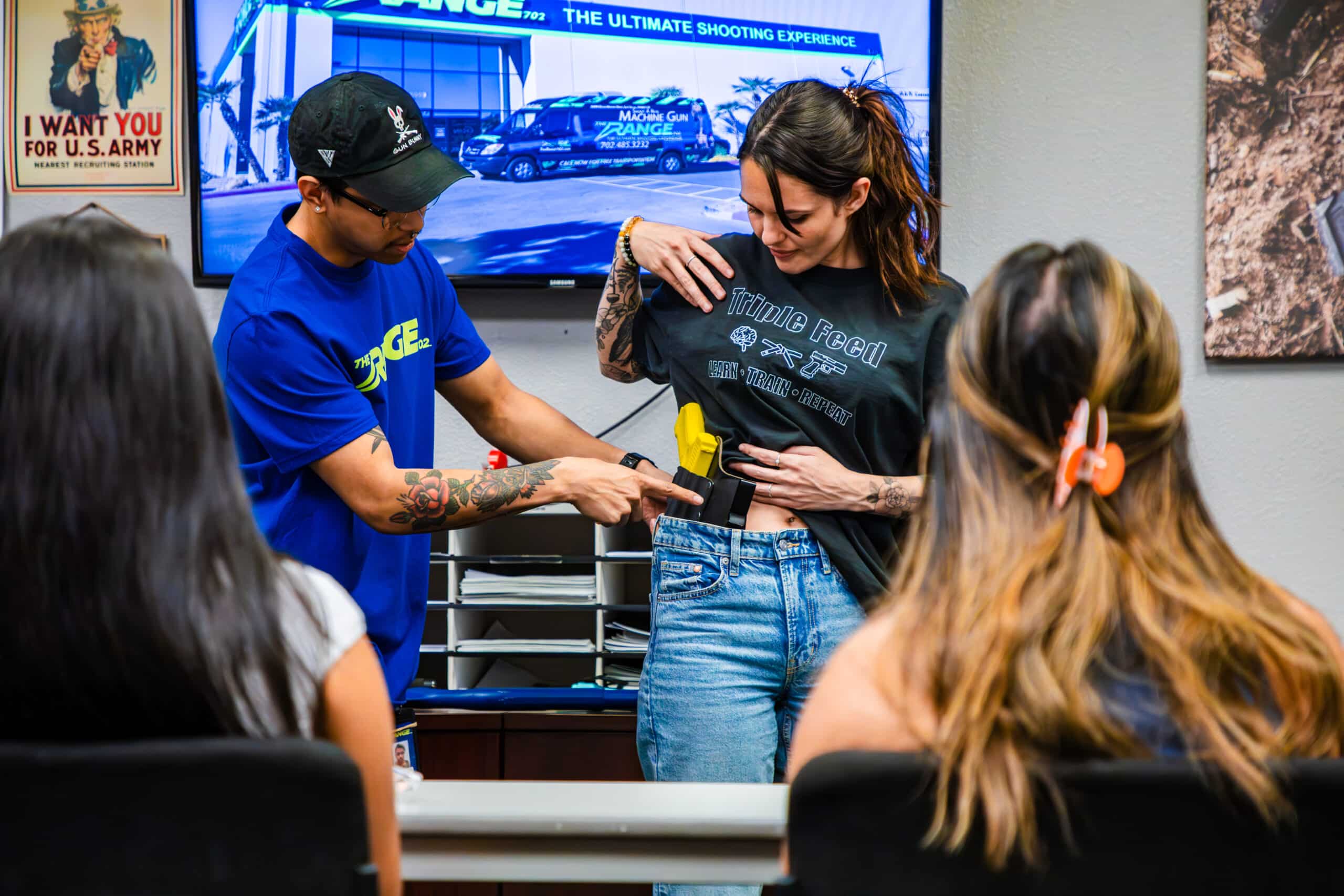
1. Stance
Good shot placement starts with the right stance. Appropriate foot placement provides a steady firing position. There are lots of different stances, but four of the most common include:
- Weaver: Your feet are staggered with your non-dominant foot forward, and you have both hands on your weapon, with your shooting arm locked straight.
- Isosceles: Your body faces directly toward the target, and both hands are on the gun; both arms are straight out, and your upper body leans forward slightly.
- Fighting: Also known as a modified Weaver or modified Isosceles, this stance brings you square with the target but keeps your feet slightly staggered.
The fighting stance has become one of the most popular, especially in military and law enforcement circles, because it combines the strengths of Weaver and Isosceles.
You’ll have your feet staggered as with the Weaver. However, your dominant side will only be about a half step back, which helps keep your shoulders and upper body square to the target. Your knees will be flexed, and you’ll lean forward slightly to absorb the recoil.
Experiment with the Weaver, Isosceles, and fighting stances to see which one feels most comfortable to you. The U.S. Department of Justice Office of Justice Programs has a good breakdown of the Isosceles and Weaver stances in their virtual library. Check it out to learn more about the shooting stances and when to use each.
2. Grip
Once you’ve established a solid foundation, it’s important to securely grip your firearm. You want to hold on firmly enough to keep the pistol steady, but you shouldn’t squeeze the weapon so tightly that it fatigues your hand.
Make a “V” with your dominant hand and place your four fingers on the dominant-hand side of the grip, with your thumb on the other side. Place the butt of the grip in the center of the “V.”
When you’re ready to fire, insert the tip of your index finger into the trigger guard and rest the pad on the trigger. Don’t put too much of your finger in the trigger guard, as doing so can impact your accuracy.
The heel of your support hand should cover the tips of your remaining three fingers, which should be wrapped around the grip of the pistol. Point both of your thumbs toward the barrel of the weapon and slightly press them into the slide to stabilize the upper part of the pistol.
You’ll need to make a few adjustments to your grip based on your hand size and the dimensions of the weapon. One-on-one training sessions at The Range 702 are a great option if you need some help perfecting your grip. Our instructors can teach you the fundamentals of marksmanship in a fun and safe shooting environment.
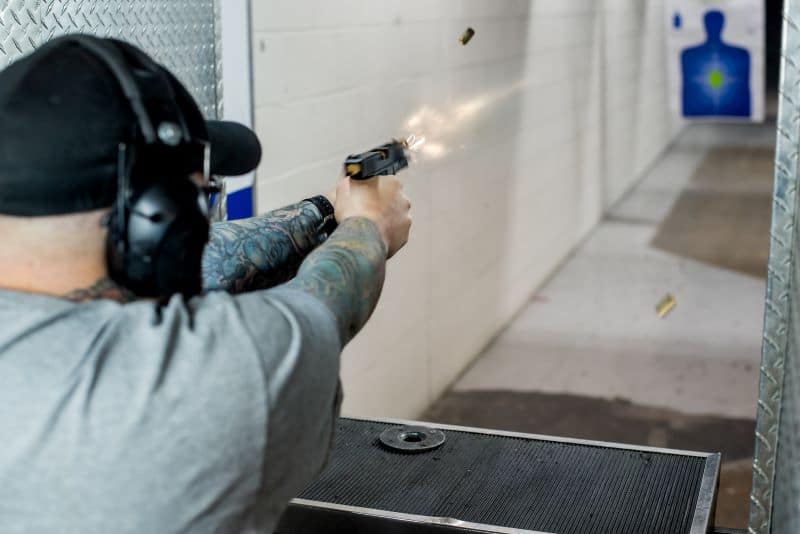
3. Sight Alignment
Sight alignment involves lining up your front and rear sights. Position the front sight post in between the two rear posts, ensuring equal horizontal spacing between the posts. You must also ensure the sights are level — even a slight tilt can drastically impact where your round impacts when it travels downrange.
After aligning your sights, focus on the front sight. If you’re doing this correctly, your actual target should be blurry. Integrated Publishing has some simple graphics that show what correct sight alignment looks like.
Weapons with red dot sights or other advanced optics eliminate the need for sight alignment. When using a weapon with a red dot, simply position the dot on your target.
4. Sight Picture
Sight picture is what you see when you align your sights with your target. Generally, you’ll want to position the top edge of the front post on your target. You’ll need to establish and maintain a clear-sight picture when shooting any type of firearm, including rifles, handguns, and shotguns.
5. Breath Control
Breath control is critical to shooting accuracy, especially when firing longer distances. At the same time, it’s important to establish a calm, regular breathing rhythm when shooting handguns at normal ranges.
Take a few slow, deep breaths before drawing your weapon, and focus on maintaining a consistent breathing pattern. When you’re first learning how to shoot, plan your trigger pull around your breathing cycle. The best time to squeeze the trigger is during natural pauses when your body is still, such as at the end of an exhale.
6. Trigger Control
Trigger control is one of the most important aspects of accurate shot placement, especially when performing follow-up shots. Firmly squeeze (not pull or jerk) the trigger back until the gun fires. The process should almost surprise you. You don’t want to anticipate the recoil and jerk the gun out of alignment.
There are two main problems you may encounter when practicing trigger control: pulling and pushing.
Pulling occurs when you place too much of your finger on the trigger, creating a hooking action that pulls the weapon to one side. Usually, the gun will pull toward your dominant hand. For example, if you’re right-handed and you inadvertently hook the trigger, your shots will pull to the right.
Pushing happens when you use too little finger or apply too little pressure with your support hand. In this case, you’ll unintentionally push the weapon away from your dominant hand as you activate the trigger, moving your rounds off target.
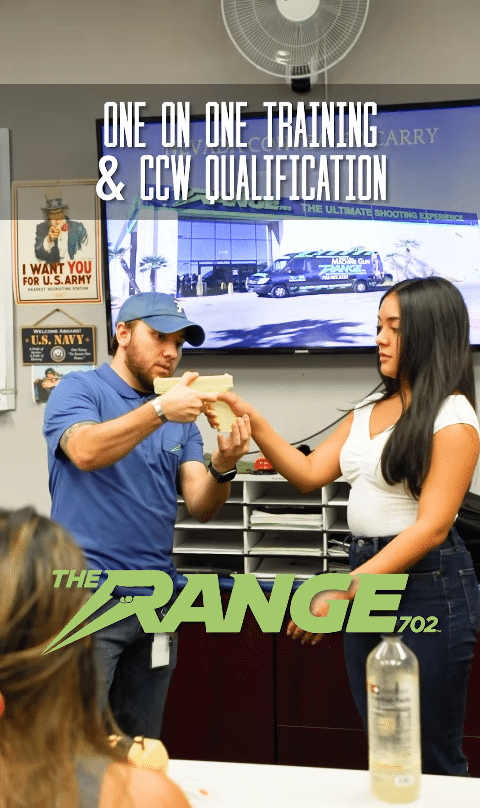
7. Consistent Practice
Consistency is arguably the most important fundamental of marksmanship. You’ll need to apply these concepts every single time you hit the range. You should also walk through these steps mentally before, during, and after each session to reinforce what you’ve learned.
According to Six Seconds, the Emotional Intelligence Network, mental practice can be incredibly effective at reinforcing skills. What does this mean for you?
In between range trips, you should review these marksmanship fundamentals in your mind. Assume the correct stance, then visualize drawing your weapon, aiming downrange, and obtaining sight alignment and sight picture. Control your breathing and imagine yourself slowly squeezing the trigger until it engages the firing mechanism.
If you have your own handgun, you can add dry-firing to your practice routine.
Double-check that your weapon is unloaded before engaging in any dry-firing cycles. Drop the magazine and work the slide back repeatedly to ensure the chamber is clear. Always visually and physically inspect the weapon and chamber to avoid accidental discharges, which can be deadly.
Once you’re sure the weapon is clear, work through the fundamentals outlined above. Start with your gun holstered and go through each step individually, including the trigger squeeze.
While visualization and dry-firing can be great additions to your practice regimen, they aren’t substitutes for the real thing.
When you’re ready to practice your fundamentals and sling live ammunition downrange, we’ve got you covered. Book a shooting experience at The Range 702 and fire some of the awesome firearms from our vault.
Don’t Forget To Adopt a Safety-First Mindset
Applying the fundamentals of marksmanship will help you become a more proficient shooter. However, safety should always be your top priority. This means treating every firearm as if it’s loaded, even if you’re certain it isn’t. Never point a gun at anything you don’t intend to shoot, and keep your finger off the trigger until it’s time to fire.
You’ll also need to wear the appropriate safety gear, which includes hearing and eye protection. At The Range 702, we have plenty of safety gear on hand if you don’t have your own equipment.
Our experienced team members will run you through the safety essentials one last time and make sure you’re wearing the appropriate protective gear before taking you to our range.
Master Marksmanship Fundamentals To Become a Better Shooter
Whether you’re new to shooting sports or looking to sharpen your skills, mastering the basics is a surefire route to success. The more time you spend drilling and refining your stance, hand placement, breathwork, and trigger control, the faster you’ll improve your accuracy.
The 1 on 1 Firearm Training offered at The Range 702 in Las Vegas is a great place to start if you’re looking to learn and master the fundamentals of marksmanship. Give us a call or book a class online now!

